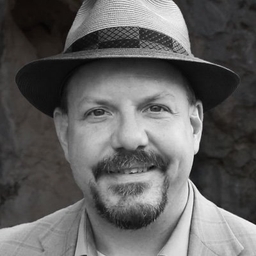
John Hawks
Statewide Reporter at Gannett
I'm a paleoanthropologist. I explore human fossils and genomes to understand where we came from and what we share with our ancestors.
Articles
-
5 days ago |
johnhawks.net | John Hawks
Last week a team led by Qiaomei Fu revealed a partial mitochondrial DNA sequence from the Harbin skull. In a second paper, Fu and her team also described protein evidence from the skull. Together, the mtDNA and protein evidence embed the Harbin individual within a broader lineage that we know as “Denisovans”. I’m very excited about these new results. They clarify some things about the Denisovans and enable some new predictions about this group and the broader fossil record of the region.
-
1 week ago |
johnhawks.net | John Hawks
Next month I’ll be heading to Dayton, Tennessee, for the centennial of the “Trial of the Century”, the case of Tennessee v. Scopes. The good people of Dayton and the Rhea County Historical Society are putting on a weeklong series of events to commemorate the trial, described at the Scopes100 site. As part of the events, they’ve invited me to come and share the current picture of human evolutionary science.
-
2 weeks ago |
johnhawks.net | John Hawks
The old saying is “Manners maketh man”. But many anthropologists of the last century approached the past with the idea that it was meat, not manners, that mattered to our ancestors. For much of the past fifty years, the broad consensus has been that meat-eating became more important to human ancestors after two million years ago. The idea has been that hunting and eating meat is connected with evolution of larger brain size—in other words, meat made us human.
-
3 weeks ago |
johnhawks.net | John Hawks
In April, Colossal Biosciences announced that its scientists had recreated the extinct species known as the dire wolf, Canis dirus. Three white puppies—Remus, Romulus, and Khaleesi—were born from a trans-species menage à trois: Each puppy started as a gray wolf embryo, scientists made 20 edits to 14 genes attempting to recreate the appearance of dire wolves, and implanted the embryos into domestic dog surrogate mothers that carried them.
-
1 month ago |
johnhawks.net | John Hawks
There's hardly a system more important to life than the heart and circulatory system. Every schoolkid learns the basics of circulatory system anatomy and function. Hearts like ours have four chambers. The right atrium receives deoxygenated blood from the major veins of the body, the inferior vena cava and superior vena cava. When the atria contract, this deoxygenated blood passes into the right ventricle, which sends it on its way to the lungs via the pulmonary arteries.
Try JournoFinder For Free
Search and contact over 1M+ journalist profiles, browse 100M+ articles, and unlock powerful PR tools.
Start Your 7-Day Free Trial →Coverage map
X (formerly Twitter)
- Followers
- 28K
- Tweets
- 25K
- DMs Open
- No

It's been a couple of years since the 130,000-year-old Nesher Ramla fossils were made public. Existing long before the major dispersal of modern humans from Africa, it isn't easy to classify them either as an early modern or Neanderthal group. https://t.co/yULpfEVexF

Peer reviews with *added non-informative content* were judged by experts as having *higher quality* than the actual non-lengthened reviews.

Scientists: size (of your peer review) doesn't matter, it's about the *content* Also scientists: https://t.co/RUmqiQ54sQ

So many connections between star knowledge and ancient societies. Some have been embodied in monuments like Stonehenge, but the knowledge of they sky and its relation to natural and social cycles is vastly older. https://t.co/lSMEJKU4ob